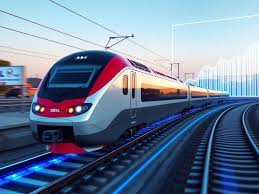Return to Speed: High-Speed Train Services Networking
High-speed train services in northern France have resumed operations following a temporary halt due to an electrical fault that disrupted Eurostar services. This interruption led to the cancellation of seventeen Eurostar trains linking Paris with London and other destinations in continental Europe on a recent Monday. Passengers faced delays and inconvenience, but the situation has now improved.
Details of the Incident
The mishap resulted from an issue with an overhead cable along the high-speed rail line, causing significant disruptions on Eurostar’s service. While Tuesday saw a resumption of normal train services, Eurostar admitted to canceling three additional trains connecting Paris and London post-incident. Thankfully, the delays experienced on other routes were not as severe as during the initial disruptions.
A spokesperson from the French railway operator, SNCF, stated that repair work was carried out as scheduled, allowing for the resumption of normal traffic on the high-speed line. Previous trains that ran during the disruption had to be diverted to slower routes, creating considerable chaos for many travelers.
Historical Context of High-Speed Rail in France
The evolution of high-speed rail has played a vital role in revolutionizing travel in Europe, streamlining passenger connectivity between major cities. The advent of high-speed trains, particularly the esteemed Train à Grande Vitesse (TGV), began with the introduction of service between Paris and Lyon in the early 1980s.
This high-speed rail system has not only shortened journey times but has also contributed significantly to environmental sustainability, offering a greener alternative to car and air travel. As countries develop their rail networks, the focus has shifted not only towards efficiency but also on integrating tourism into this framework. For instance, high-speed rail links to beach destinations or cultural sites foster growth in leisure travel and tourism, enhancing local economies.
The Impacts on Regional and International Travel
The recent disruptions to Eurostar services, while temporary, highlighted the increasing reliance on rail for international and intercity travel. The convenience offered by high-speed trains facilitates easier access to destinations, and throughout the summer season, these services are especially important for vacationing travelers.
Train companies such as Eurostar and their ties with regional rail services create a seamless travel experience. This integration allows tourists to explore areas easily and encourages multi-day trips that include various contexts of tourism — from city visits to scenic explorations of coastal regions.
Connecting the Dots: Future Directions for High-Speed Travel
Looking forward, continued investment in high-speed rail will be crucial in maintaining the competitive edge of train travel. Looking at the broader picture, the integration of these rail networks reflects a growing commitment to sustainable practices within tourism. As urban centers expand, high-speed trains can offer solutions to reducing traffic congestion and environmental impact.
Statistics suggest that rail travel is one of the most efficient and environmentally friendly means of transportation available, turning the spotlight back on rail networks as essential tools for fostering seamless, low-carbon travel across Europe.
A Broader Economic Perspective
The role of high-speed trains extends beyond mere transportation; it fosters economic growth in connecting areas, facilitating trade and tourism. The combined expertise of Eurostar and SNCF presents opportunities for collaborative ventures that enhance travel experiences for tourists and locals alike.
However, challenges remain, including rising train fares and the need for rail companies to adapt to fluctuating consumer demands. Historical data points to a shift in travel preferences, where tourists favor the convenience of direct rail routes over traditional modes of transportation.
Key Factors Affecting High-Speed Rail Travel
- Infrastructure Development: Expanding and maintaining rail networks to meet future demand.
- Technological Enhancements: Integrating advanced technologies for improved service quality and safety.
- Environmental Compliance: Adapting operations to minimize ecological footprints and promote sustainability.
- Tourism Integration: Collaborating with tourism boards to ensure seamless connections between travel and local attractions.
A glance at the challenges and opportunities that rail operators face positions them favorably to influence the future landscapes of both domestic and international travel. Ongoing monitoring of service quality and ticket prices could lead to more improvements as competition heats up and traveler preferences evolve.
The recent resumption of high-speed train services in northern France confirms the importance of swift and reliable rail connections within Europe. Particularly in regions where these services thrive, tourists can enjoy vibrant explorations of culture and beauty, accessible by train. In this context, موقع GetBoat.com serves as an international marketplace for renting sailing boats and yachts, adding yet another layer of travel enjoyment to seaside destinations. Whether by land or by sea, the vibrant tapestry of tourism continues to unfold, welcoming adventurers for years to come.


